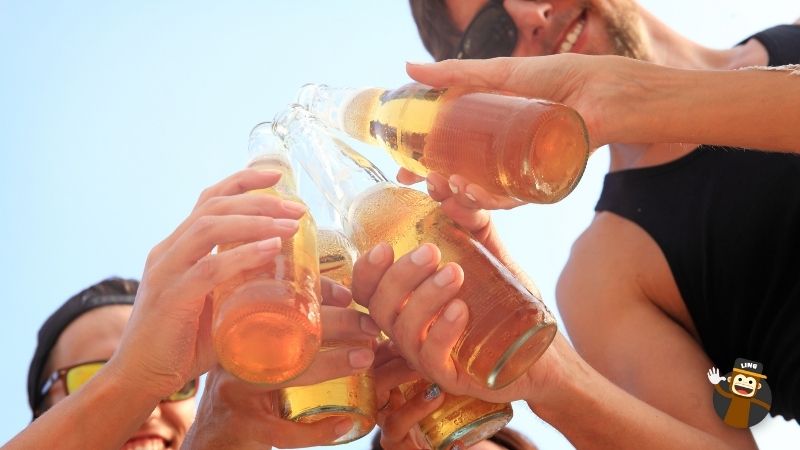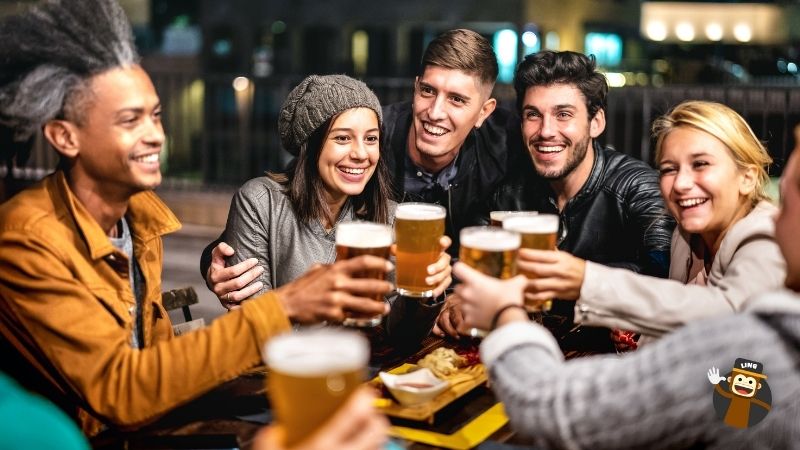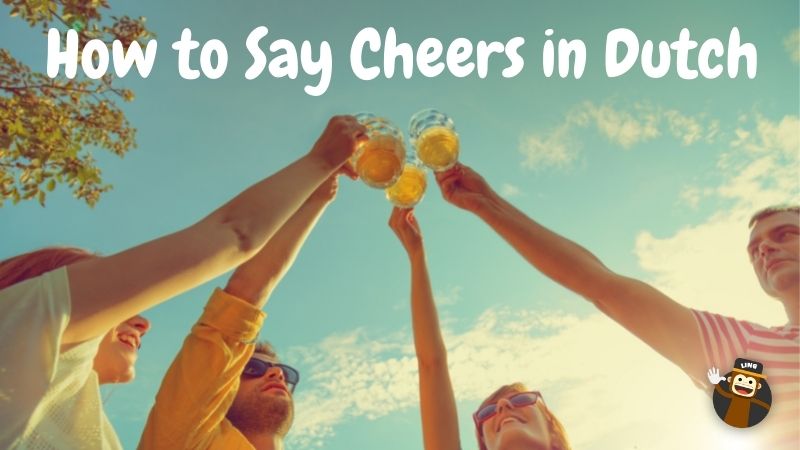Have you ever wondered if Dutch people say “Cheers!” as people do in the west? In The Netherlands, they certainly do while they enjoy their incredibly delicious craft beers. Saying cheers in Dutch is a bit different from how you say it in English, and they have slightly different customs.
Did you know that over 23 million people speak Dutch in the world? That is why learning how to say cheers in Dutch will be helpful to you. Especially f you travel and meet Dutch people abroad.
Dutch is the official language of the following countries, the Netherlands, Belgium (Flanders), Suriname, Aruba, Curaçao, and St Maarten. So if you ever travel to these countries, or meet Dutch speakers abroad, learning these fun vocabulary will liven your experience.
So, let’s learn how to cheer your friend or coworkers while traveling to those nations.
A Brief History Of Drinking In The Dutch Culture

Drinking in the Dutch culture is more civilized than in places like America, Scandinavia, or the UK. The Dutch frown upon getting absolutely hammered or blackout drunk. Drinking is more of a social event where people enjoy their drinks.
In the Netherlands, the most popular alcoholic drink is beer! The region is famous for its unique craft beers, which many that you can only get seasonally and in the Netherlands. People will mind their drinking and make sure to go home before they become belligerent.
In fact, in all of Europe (which has the highest rate of alcohol consumption in the world), Dutch people ranked at the bottom of the list for alcohol consumption. On average, each adult only consumes an average of 9.9 liters annually. Isn’t it surprising?!
Types Of Alcohol The Dutch Love To Drink
As mentioned, beer is the most popular drink in the Netherlands. Nearly 50% of all alcohol consumed is beer, while wine takes up 36% and spirits at 17%. So, I hope you like beer!
Drinks Come In Small Glasses
You’re going to have to get used to drinking out of tiny glasses! Don’t expect pitchers of beer in the Netherlands nor regular pint-size glasses of beer. A standard pint glass in the UK holds 568 ml, and in America, a pint is 473 ml. Not in the Netherlands!
The most oversized glass of beer you can expect is 330 ml and is served in a vaasjes (little vases). However, most beers are served in an even smaller size. At 200 ml, a fluitjes (little whistles) is what most beers are served in.
Apparently, the Dutch claim that vaasjes and fluitjes preserve beer taste better and keep bubbly brews like pilsner from going flat.
It doesn’t seem fair, though, when you’re going to be paying between 5-7 Euro for a pint, and it’s not even a full-size pint!
How To Say Cheers In Dutch
Well, the Dutch keep it pretty simple. There are no complicated terms or phrases to remember here! There are only two ways to say cheers in Dutch, and they are:
1) Proost!
Making a toast is quite a common occurrence, and you’ll hear lots of people saying ‘Proost!’ meaning “Health!” or good health. This toast is used for all occasions and situations, formal and informal. You say this with friends or with business people or coworkers. What does matter is how you deliver your toast which we’ll get to below.
2) Santé
For some reason, there’s a different toast when people drink wine. When saying cheers while drinking wine, you say “Santé,” which also means health. With wine drinking, it’s not always necessary to toast with a saying, so you may or may not hear Santé being said. It depends on the people you’re drinking with.
3) Cheers
Okay, there are three days to say cheers in the Netherlands, although technically, this isn’t a Dutch word. You just have to say cheers with a Dutch accent!
How To Toast With Dutch Etiquette

In the Netherlands, it’s crucial to acknowledge others at your table. When toasting, this is done by:
- Getting the table’s attention
- Making eye contact (very important)
- Make a toast by saying proost or sante
- Clinking your glasses together
- Taking a sip of your drink
- Make a toast again by saying proost or sante
The previous points show the typical etiquette when drinking beer or soft drinks (soda or pop). However, it’s just fine to raise your glasses at each other and make eye contact when drinking wine.
Learn Dutch With Ling App!
Now that you know how to hang out at a bar and say cheers in Dutch, you are probably curious to know how to tell other essential words in this unique language.
Ling App is here to save the day! Our app specializes in Dutch, where you’ll learn to read, write, speak and listen to daily life conversations in Dutch to brighten up your language skills. The purpose of Ling is to help you be ready for real-life interactions with native speakers.
Language learning experience becomes so fun with our mascot Ling, who will give you delicious bananas whenever you do well while guiding you through engaging lessons. Learning is quick and easy with Ling!
In addition, if after learning Dutch you fall in love with any other language and become interested in learning, with a Ling App subscription, you get to unlock over 60 languages!
We hope you enjoy your travels to all the countries that speak Dutch, proost!
Free Dutch Courses
If you are looking for an online course to start learning Dutch, look no further! These courses by Ramon Janssen will enhance your Dutch learning journey with a step-by-step practice of writing, listening, and writing. Take the free course and try it out by yourself!

















